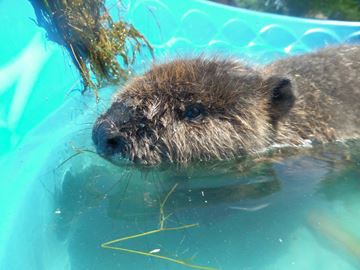Ahh, the age old dilemma that most cities spent 3 whole minutes wrestling with. Kill them? Or let them Be-[aver]? Mind you in Martinez it took 200 people at 2 meetings over 7 months to convince 5 council member, but we’re exceptional. Most places never get the message.
Take Pennsylvania for example, where they’re killing beavers to protect Old Growth Hemlock Forests. At least they had the decency to pretend to struggle with the decision. But we know better. This is Pennsylvania for petesake, where the trapper said he was only going to remove the “soldier beavers.” Remember? One of my very favorite columns EVER.
Beavers Versus Old Growth: The Tough Reality of Conservation

Conservationists know beavers perform valuable ecological services, creating important habitat through their dams and tree clearing. They’re charismatic animals. Their recovery in the eastern United States is a stunning conservation success.
What happens when those thriving beavers threaten old-growth hemlock groves, one of the most imperiled habitats in the East?
That’s the situation at the Conservancy’s Woodbourne Forest Preserve in north-central Pennsylvania. It is forcing conservationists to choose between beavers and old-growth trees.
To some, this is a no-brainer for a wildlife sanctuary: leave it to beaver.
After all, haven’t beavers been shaping the forests for millennia? Isn’t it natural?
The reality is much more complicated. If people and beavers are to exist and thrive together, sometimes tough choices have to be made.
Guess what they decide? If beavers and people are making things hard for old growth Hemlock forests, will they kill the people?
“Beavers can do a heck of a lot of good,” says Hardisky. “But they can also do a lot of damage.”
It’s easy to say that beavers should be left to their own devices. It’s much harder to say that when they’re flooding your home or farm field or local road.
“The reality is, we have to balance the beaver population with human needs,” says Hardisky. “The state can support a large beaver population, but there is a social carrying capacity – how many beavers people can live with. We manage them so there is a stable, healthy population.”
This necessitated a difficult decision:
Beavers or Hemlocks?
Ooh Ooh Call on me! I know this one!
“We have to decide what we want for the forest, not only at Woodbourne, but across the country,” says Eckley. “In this case, the beaver population is thriving. That’s a success. But beavers may not be the only consideration. I think old-growth forest is important, too. This is what we as a society have to decide. There are no easy answers here. We have to be informed and think about what we want the future forest to look like.”
I suppose if there were a real trial to decide which species should live, it would include an examination of what each species contributes. How many birds, fish and mammals depend on old growth hemlock? Versus how many fish, birds, mammals and insects depend on beavers? I wish I got to say that in court.I mean it is called the NATURE CONSERVANCY not the OLD HEMLOCK CONSERVANCY. The article makes it seem like the rising water level killing trees is ruining old growth, so I commented this of course.
Why would scientists use a false dichotomy to make a decision? In stall flow devices to regulate dam height (well researched and studied all over the hemisphere) and save the trees AND the beavers. I know flow devices work because my own city installed one 7 years ago to prevent flooding, and now because of our safe beaver-tended wetlands we regularly see otter, steelhead, woodduck and even mink in our urban stream.
Solve the problem, not the symptom.
Mr. Hardisky from PA Game Commission wrote back staunchly defending the decision:
Water control devices installed in beaver dams are usually effective in regulating water levels, but do nothing to address the problems of dwindling food supplies and direct damage to the surrounding old growth forest. In this case, you cannot have your cake and eat it too. “Saving” beavers at the Woodbourne Forest Preserve will result in additional loss of old growth trees. Population reduction was the most responsible solution to this problem. Water control devices have been used at Woodbourne in the past and will likely be used in the future to help control flooding and protect native plant communities. These devices are not fool-proof, however. Controlling water levels in beaver wetlands in conjunction with a regular, limited beaver harvest will extend the life of the beaver colony and the many benefits they provide by 10-20 years. If you do not remove beavers on a regular basis, they will eat themselves out of house and home … no food, no beavers, no environmental benefits. This was the exact scenario at the Woodbourne Forest Preserve. As the author noted in his week-long blog series, lack of human intervention can result in significant negative impacts to the environment and loss of plant communities such as old growth forests. Beavers have no significant predator other than man. It would be irresponsible for us to ignore what we have learned from sound science and modern wildlife management techniques.
To which I would point out that it’s not like beavers LOVE hemlock. They would much rather have some riparian willow, birch or aspen to munch on. Which would cost an afternoon and three busloads of boy scouts to stake into the mud, and thrive on beaver chewing and regrowth protecting the Hemlock trees for decades to come.
I’m sure Mr. Hardisky (if indeed that IS his real name! It sounds kind of like a bad melodrama…) has a reason why that wouldn’t work either.


 Build the Beaver Deceiver
Build the Beaver Deceiver
 Mike
Mike











































